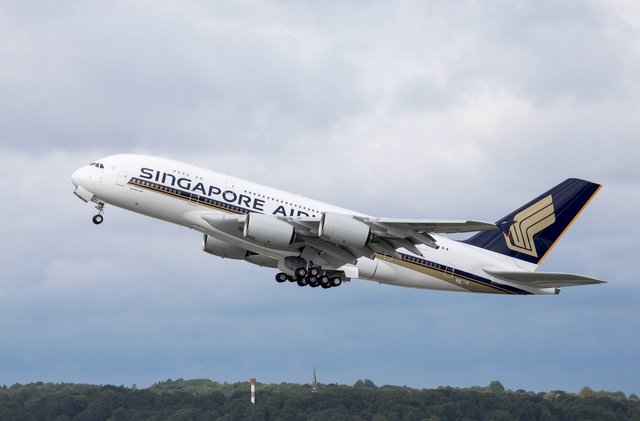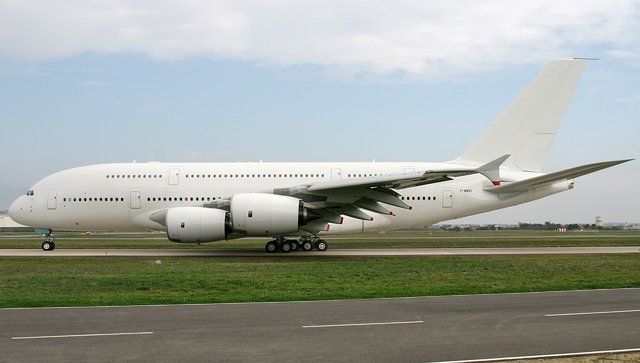On the 25th October, 2007, Flight SQ380 left Singapore's Changi Airport en-route to Sydney, Australia to become the maiden commercial flight of the mighty Airbus A380, the world's largest passenger aircraft.
Registration number 9K-SVA successfully carried 471 passengers who had bought their tickets via an eBay auction with all the proceeds going to charity, in comfort and luxury before turning around and heading back to Singapore. It heralded a new golden age of flight.

Picture copyright of Airbus Industries
Singapore had leased its first four A380 aircraft, as opposed to buying them outright, from German leasing company, Dr Peters Group and the lease on the first aircraft expired after 10 years in October 2017. After being painted white, it was returned to Europe where it sits awaiting its fate at a storage facility at Tarbes Lourdes Pyrénées airport in France as the second of 3 more aircraft to be returned sits at Changi Airport.

So what happens when a lease expires? Aircraft that currently have a list price of $445 million dollars USD can't be allowed to sit around kicking their undercarriage for too long, although it is believed that these four cost the heavily discounted sum of $200 million dollars USD, but still, an awful lot of money.
Well, the first and best option was to find a new buyer or lesee, but with sales of the A380 struggling, and despite initial interest from a number of airlines, it appears from Dr Peters CEO, Anselm Gehling that it has proved too difficult a task to do an economically satisfactory deal, and so now the clock is ticking before this magnificent aircraft and its cutting-edge technology is broken for spares and scrap.
“The main reason … is that many airlines currently using the A380-800 will have a high demand for individual replacement components due to upcoming maintenance intervals,”
So how much are old A380 spare parts actually worth?
Sadly, despite my best googling, I've no idea other than the estimated tear-down price would be roughly $90million USD, but to get some further context, Dr Peters suggested in their report that the easiest items to sell would be the undercarriages and the auxiliary engine quickly followed by the main engines which it would be also possible to re-lease.
There is also a huge market for old aircraft interior parts by collectors, a quick search reveals many outlets including eBay sell such items.
However much it's worth for spares, Dr Peters reports to its shareholders that it will expect to have made a $80million USD profit on each aircraft over its lifespan, but I still find it incredibly sad when such a marvel of engineering gets broken up. For me, these beautiful machines are almost alive with their millions of moving parts all working together harmoniously and with perfect precision for so long and simply smashing it up and flogging the bits would be such a shame.
And the future of the A380?
Again, very sadly she faces an uncertain future with a slowly decaying order book as airlines move to different financial models of operation. Currently, from 331 firm orders, there have been 223 deliveries with Emirates being far and away the biggest customer but with the uncertainty of firm future orders materialising, could this be the beginning of the end of the 'Queen of the Skies'?
thanks for telling your story
Downvoting a post can decrease pending rewards and make it less visible. Common reasons:
Submit
You got a 16.54% upvote from @brupvoter courtesy of @nathen007!
Downvoting a post can decrease pending rewards and make it less visible. Common reasons:
Submit